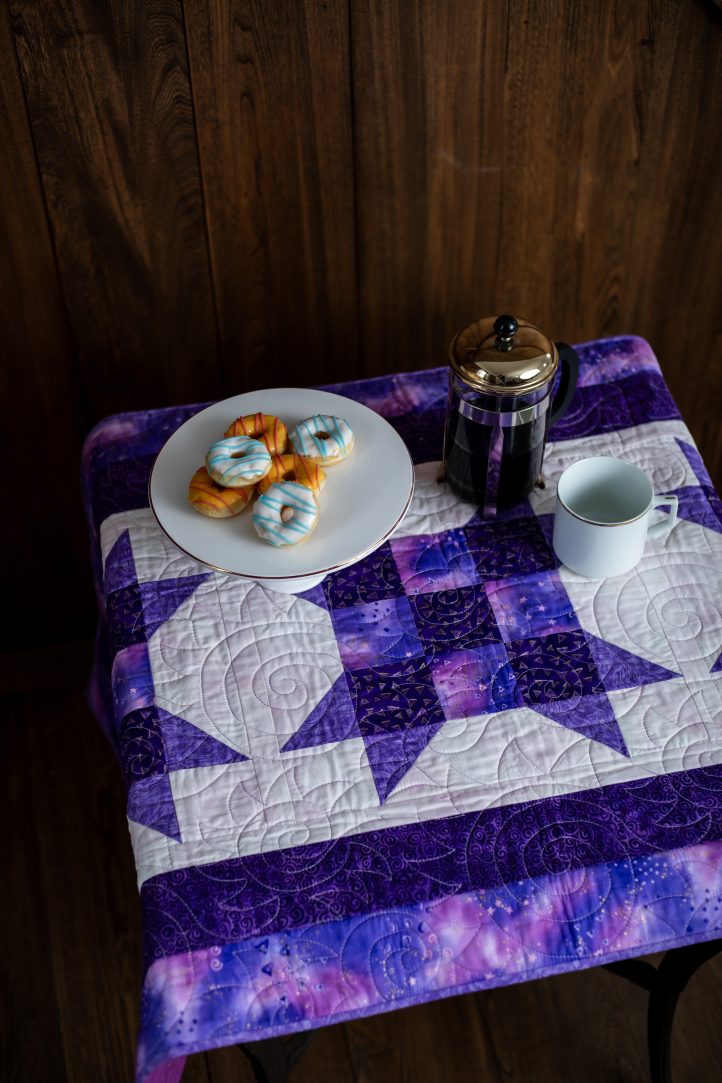
Make the classic farmer’s daughter block in bold violet hues with this spring table runner pattern from Brenda Plaster. Featuring three farmer’s daughter blocks, this table runner pattern also features sashing and borders and is a dreamy project for showing off bright spring and summer fabrics. Makeover your kitchen or dining room table with a burst of color this May with this easy quilting project.
Finished Size: 29 1/2” x 61 1/2”
Designer Notes:
- Please read pattern before starting your project.
- This pattern includes: Three 15” blocks with 1” sashing, 1”, 3” and 3” borders
ADDITIONAL COLORWAYS:
The designer has provided fabric information for the sample shown, as well as additional colorways as inspiration for our readers!
From left to right: Aura by QT Fabrics, Harvest Minis by P&B Textiles, and Laurel Burch Basics by Clothworks
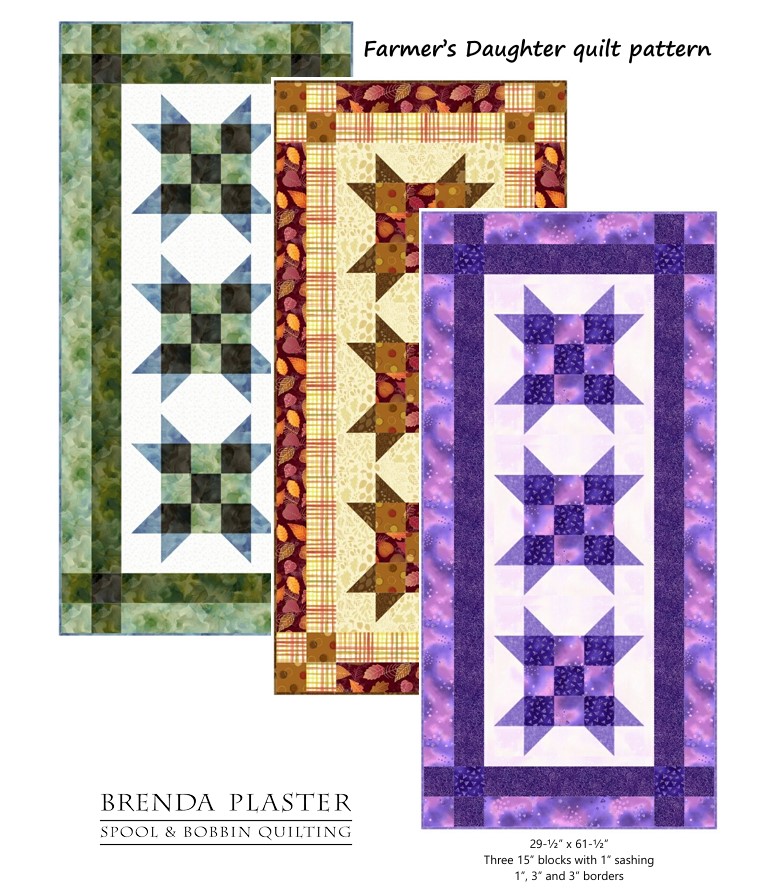
PATCH SUMMARY:
Note: Do not cut from this summary; see Fabric Requirements and Cuts. Patch descriptions refer to fabric sizes/shapes used to construct patches, not the finished fabric sizes/shapes.
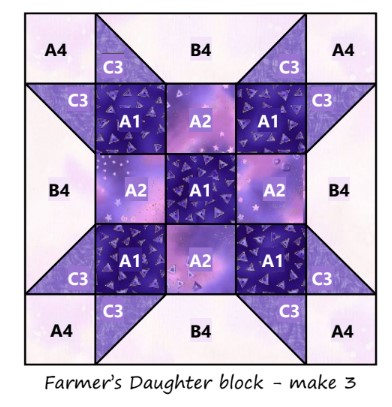
A: 3-1/2” square: 15 A1, 12 A2,12 A4
B: 3-1/2” x 9-1/2” rectangle: 12 B2, 12 B4
C: 3-1/2” square: 15 C3
D (sashing): 1-1/2” x 15-1/2” rectangle: 3 D4
E (border squares): 3-1/2” square: 4 E1, 4 E2, 8 E5
Fabric estimates are based on useable fabric width (selvage to selvage) of 42”. Add yardage if you prewash your fabrics or are fussy-cutting.
Fabric cuts are across width of fabric (WOF). Lengthwise cuts of borders and sashing is preferred (fabric does not stretch on the lengthwise grain), but in this pattern the cuts are WOF to save fabric.
In the patch labels (see Patch Summary), the letter refers to the patch. The number refers to the fabric from which it is cut. For example, A1 is an A patch cut from Fabric 1.
You are instructed to cut some strips in half to create half strips; this is to avoid strip-piecing longer strips than needed and to save fabric.
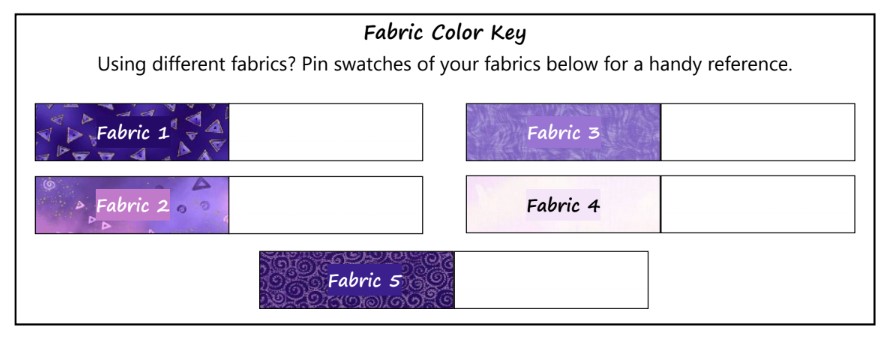
Fabric Requirements and Cuts:
- Fabric 1: 3/8 yard
- A1: Cut WOF [3] 3-1/2” strips. Cut 1 strip in half to make a total of 2 full and 2 half strips.
- E1 will be cut in Step 1.
- Fabric 2: 7/8 yard
- A2 and third border: Cut WOF [6] 3-1/2” strips. Cut 1 strip in half to make a total of 5 full and 2 half strips. E2 will be cut in Steps 1 and 8.
- Fabric 3: 3/4 yard
- C3: Cut WOF [3] 3-1/2” strips (2 strips may be enough if fabric is wider than 42” ). From these, cut [24] 3-1/2” x 3-1/2” squares.
- Binding: From remaining fabric cut enough 2-1/4” or 2-1/2” strips (your preference) to make about 192” binding.
- Fabric 4: 3/4 yard
- B4 and A4: Cut WOF [4] 3-1/2” strips. From these, cut [12] 3-1/2” x 9-1/2” B4 rectangles and [12] 3-1/2” x 3-1/2” A4 squares.
- First border and D4 (sashes): Cut WOF [5] 1-1/2” strips.
- Fabric 5: 5/8 yard
- Second border and E5: Cut WOF [5] 3-1/2” strips. From 1 strip, cut [8] 3-1/2” x 3-1/2” E5 squares.
- Backing: 2 yards
- Backing 4” larger on all sides than the quilt top is recommended for longarm quilting 37 1/2” x 69 1/2”). Two yards makes a backing measuring WOF x 72” .
Instructions:
All seams are 1/4”. Press seams in direction of arrows in illustrations or per instructions. Or there’s the option of pressing seams open.
- From each of 2 Fabric 1 and 1 Fabric 2 strips, cut [2] 3-1/2″ x 3-1/2” E1 and E2 squares. Join remainder of strips as shown below. Cut across strip set at 3-1/2” intervals. Cut 6. Press seams toward Fabric 2.
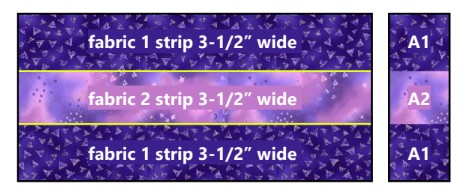
- Join Fabrics 1 and 2 half strips as shown below. Cut across strip set at 3-1/2” intervals. Cut 3. Press seams toward Fabric 2.

- Join these units made in to [3] 9-1/2” x 9-1/2” nine patch squares.
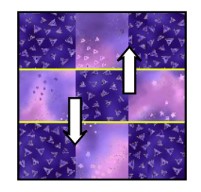
- Join Fabrics 1 and 2 half strips as shown below. Cut across strip set at 3-1/2” intervals. Cut 3. Press seams toward Fabric 2.
- Draw a diagonal line on wrong side of 3-1/2″ Fabric 3 squares. Place right sides down on sides of 3-1/2” x 9-1/2” Fabric 4 rectangles, aligning outer edges and orienting stitch lines as shown. Stitch on drawn line. Cut away excess fabric, leaving a 1/4” seam. Press seams toward C3. Sew 12.
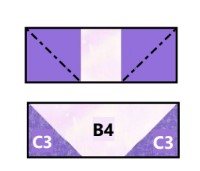
- Sew A4 squares to sides of 6 of these units to make [6] 15-1/2” x 3-1/2” rectangles, the blocks’ top and bottom rows. Press seams toward A4.

- Sew remaining 3 units to sides of nine patch squares made in Step 1 to make [3] 15-1/2” x 3-1/2” rectangles, the blocks’ middle rows. Join these rows to complete [3] 15-1/2” x 15-1/2” blocks, as shown.
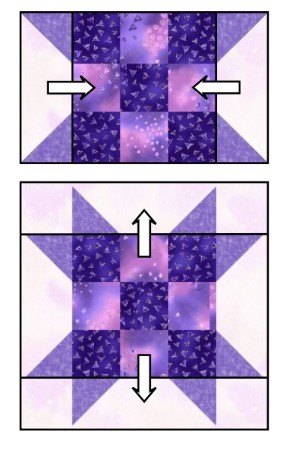
- Note: Refer to illustrations below when completing the next steps. Join strips to make lengths needed.
- Sew remaining 3 units to sides of nine patch squares made in Step 1 to make [3] 15-1/2” x 3-1/2” rectangles, the blocks’ middle rows. Join these rows to complete [3] 15-1/2” x 15-1/2” blocks, as shown.
- Measure width of blocks; should be exactly or close to 15-1/2”. Cut 2 sashing strips to that length. Sew sashes between blocks to complete quilt center. Press seams toward sashing.
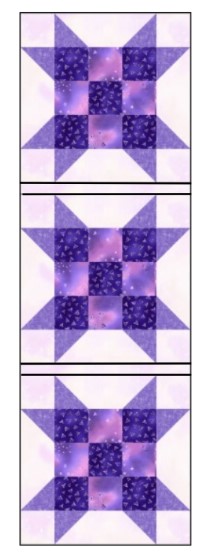
- Measure length of quilt center. Cut 2 first border strips to that length and sew to sides of quilt. Press seams toward border.
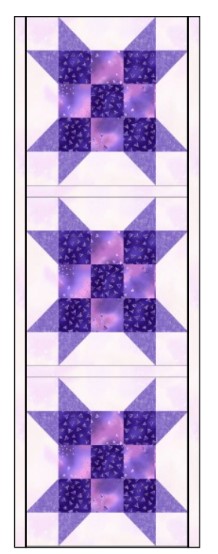
- Measure width of quilt. Cut 2 first border strips to that length. Sew first border strip to top and bottom of quilt. Press seams toward borders.
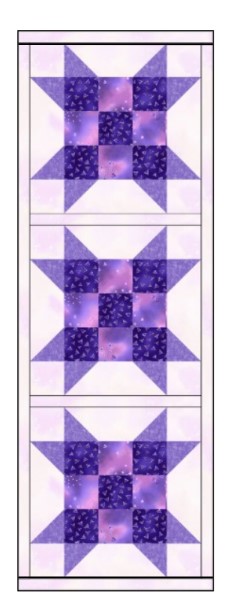
- Measure length of quilt. Cut 2 second border strips and 2 third border strips to that length. Sew a second border strip to a third border strip. Press seams toward second border. Sew to sides of quilt.
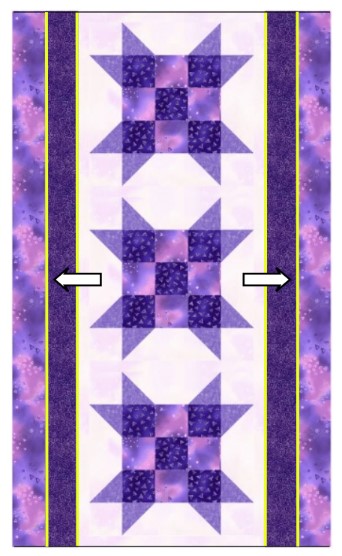
- Cut [2] 3-1/2” x 3-1/2” E2 squares from remnants of Fabric 2 strips. Sew these squares, the E5 squares and the E1 and E2 squares cut in Step 1 to sides of top and bottom border strips cut in Step 7 as shown on the next page. Press toward borders.
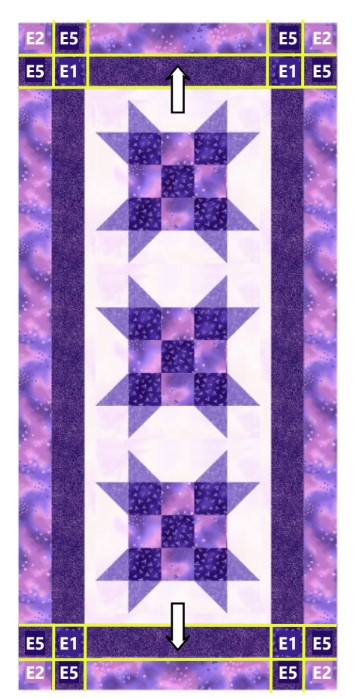
- Layer top, batting and backing. Quilt as desired. Bind quilt with Fabric 3 binding strip.
This pattern was tested by Sheila Ciechoski and Carol Sebald. Thank you!

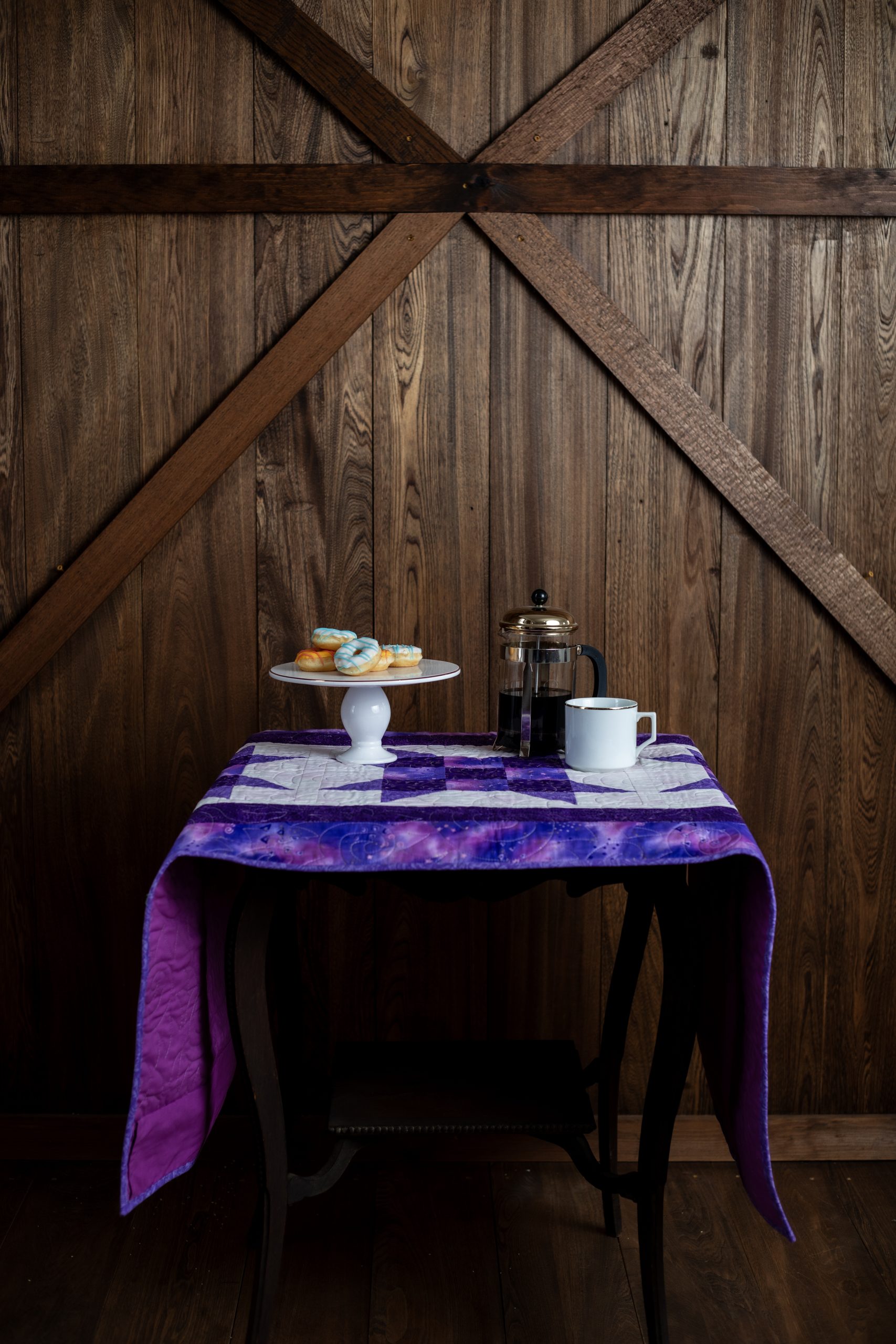
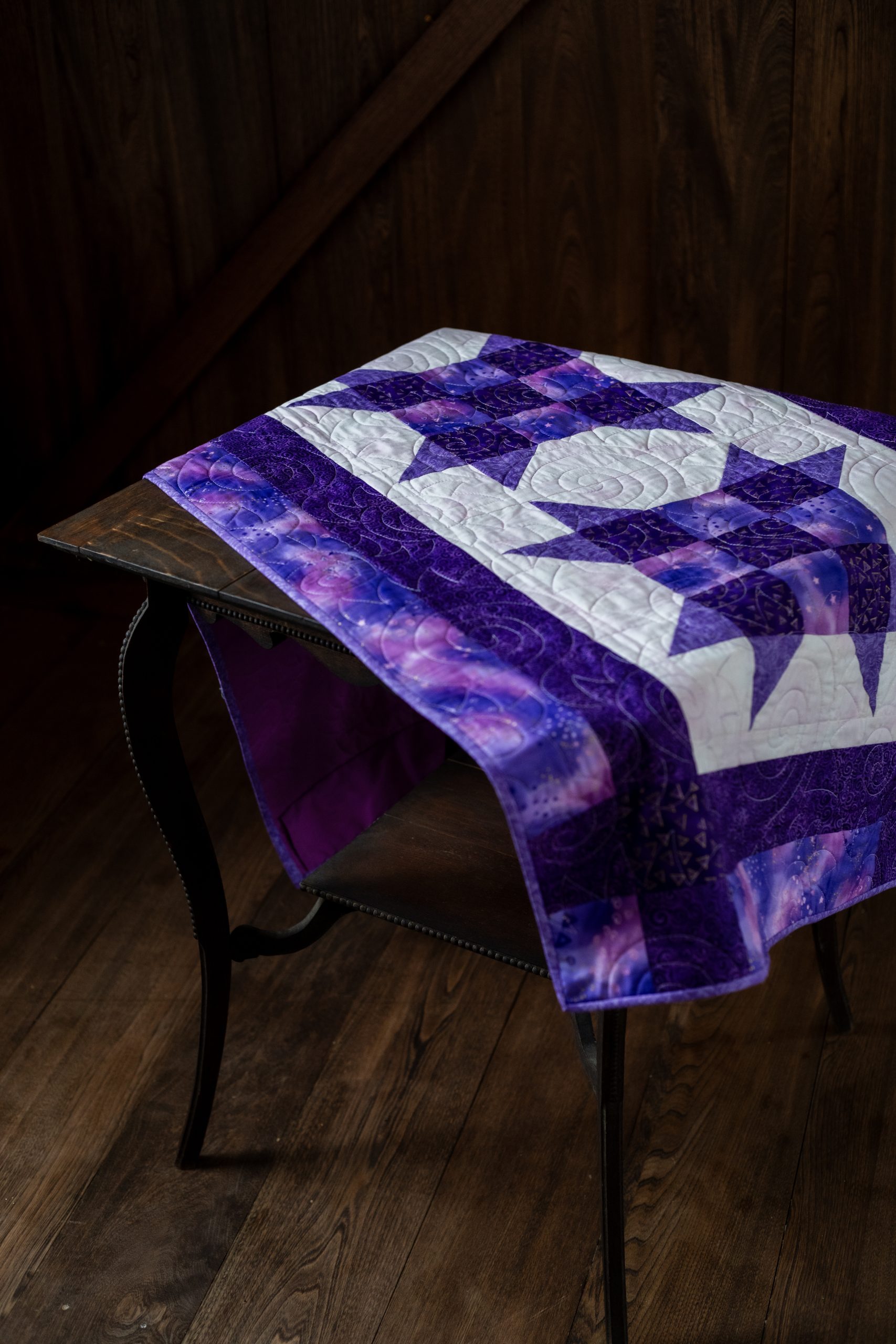
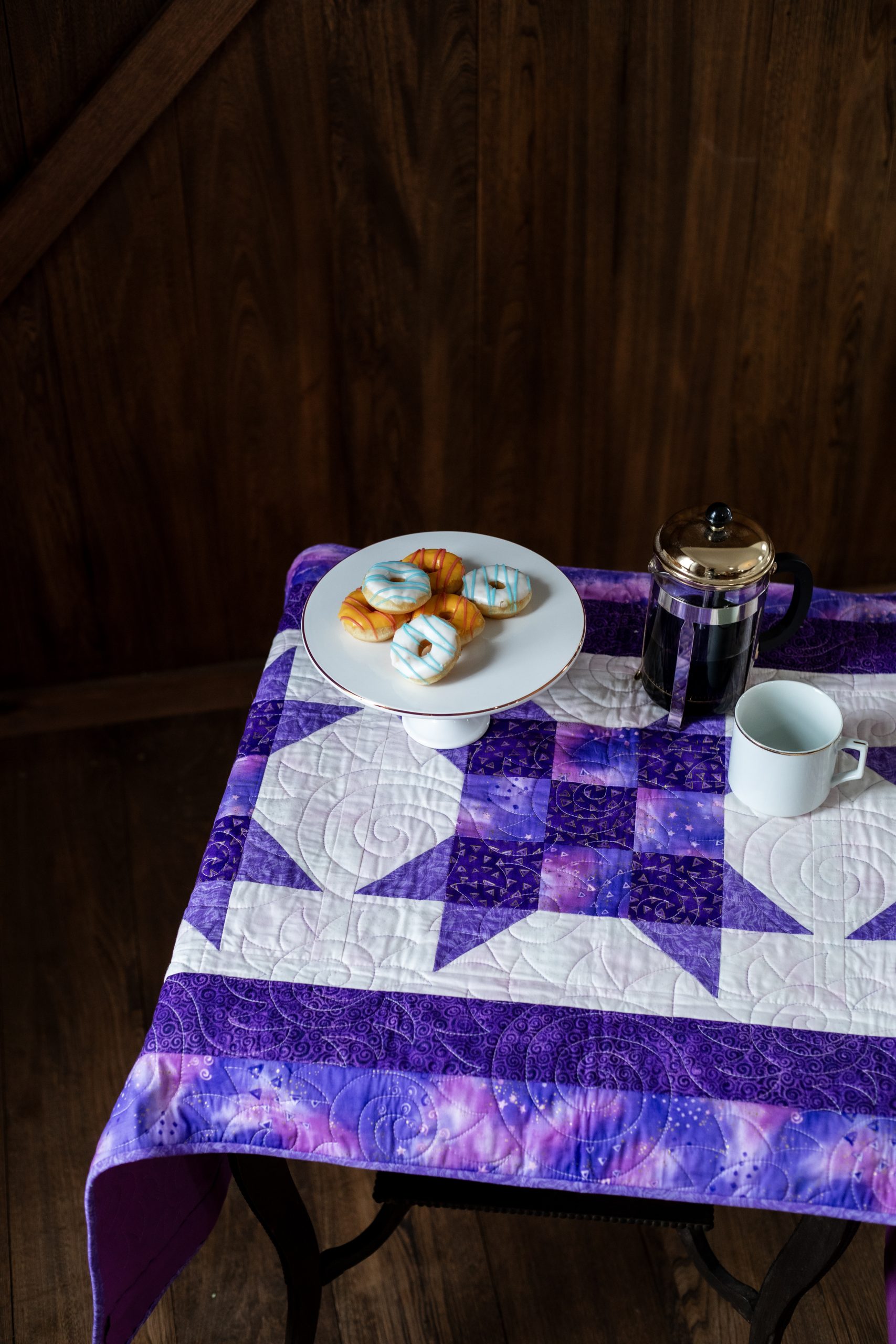
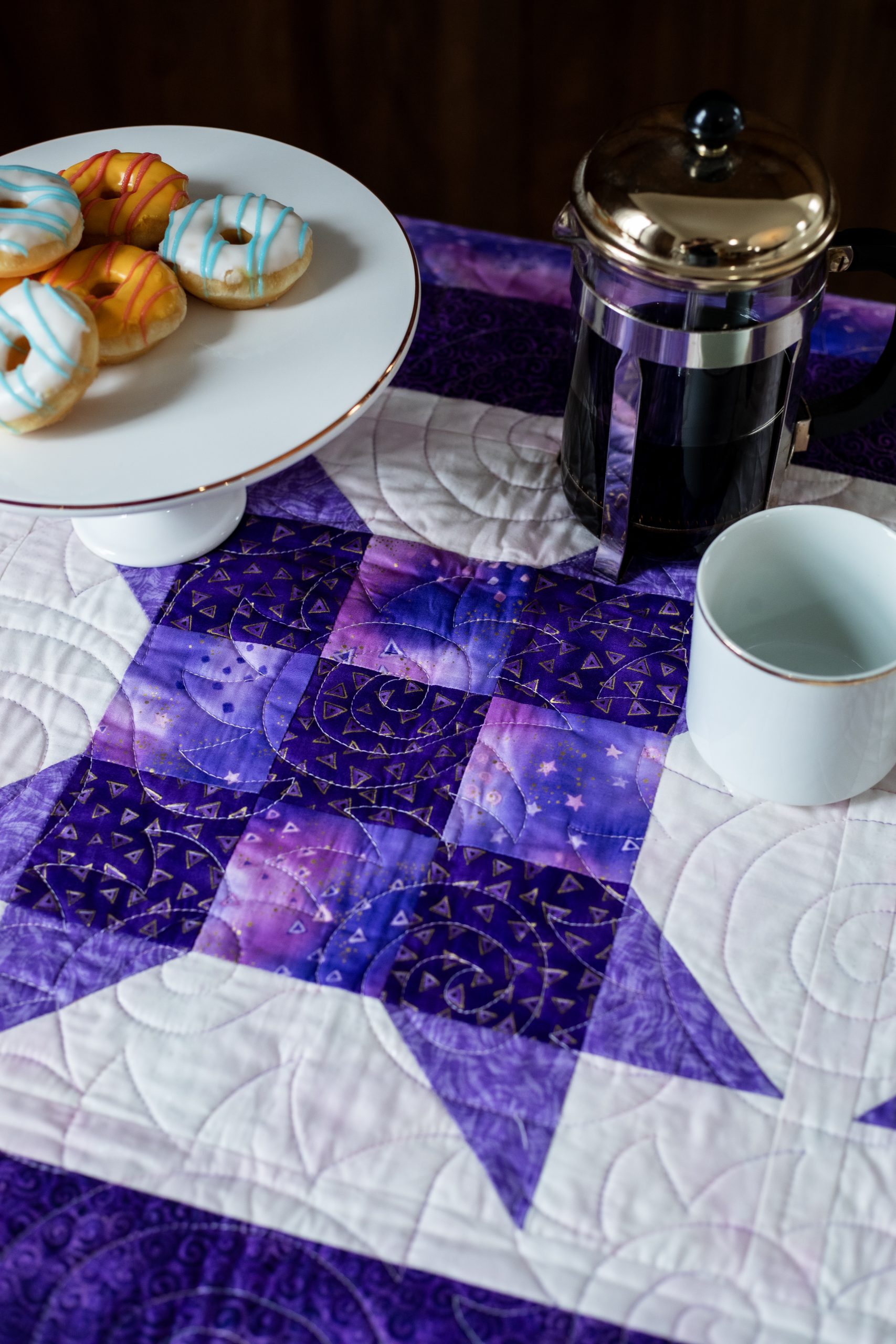
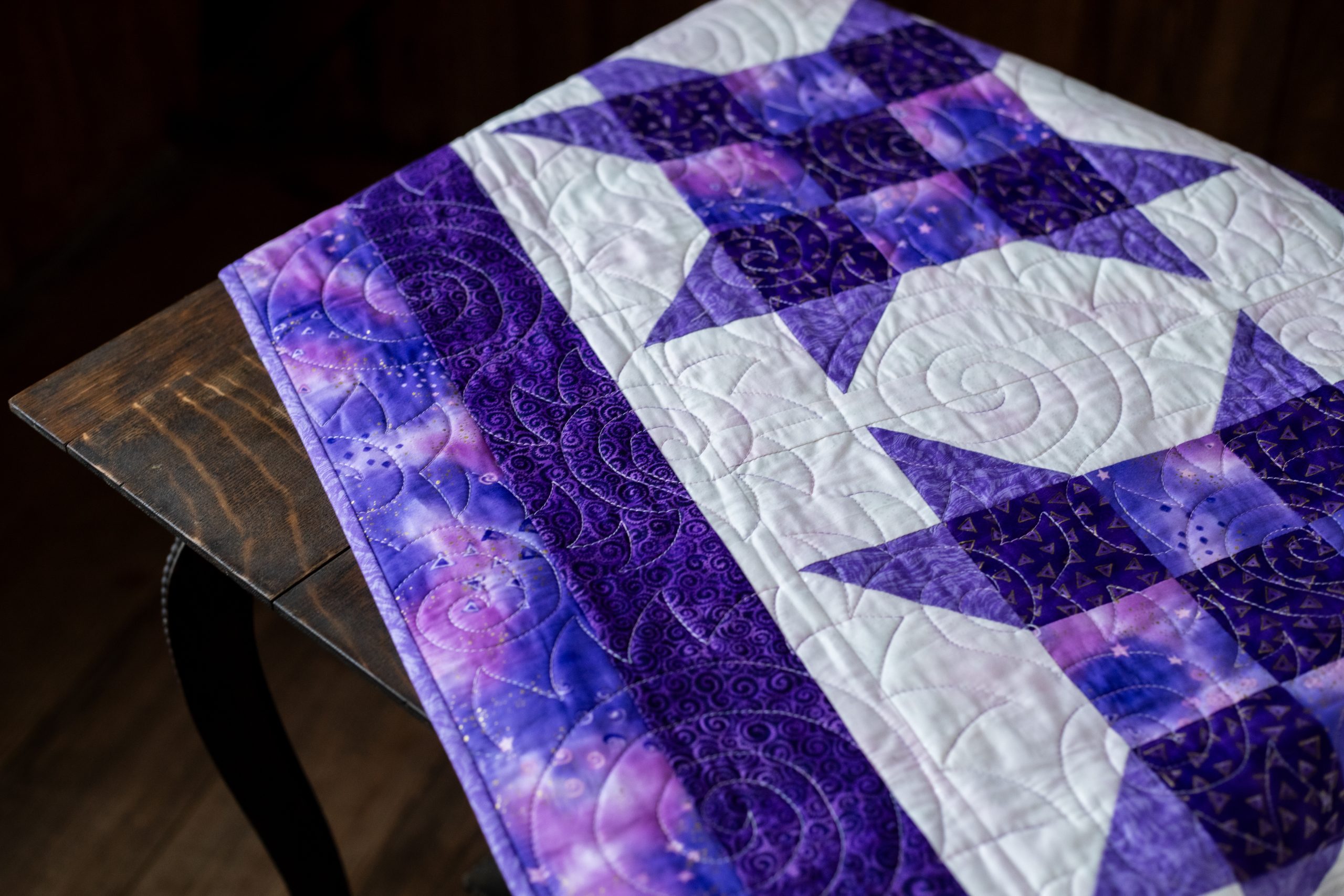
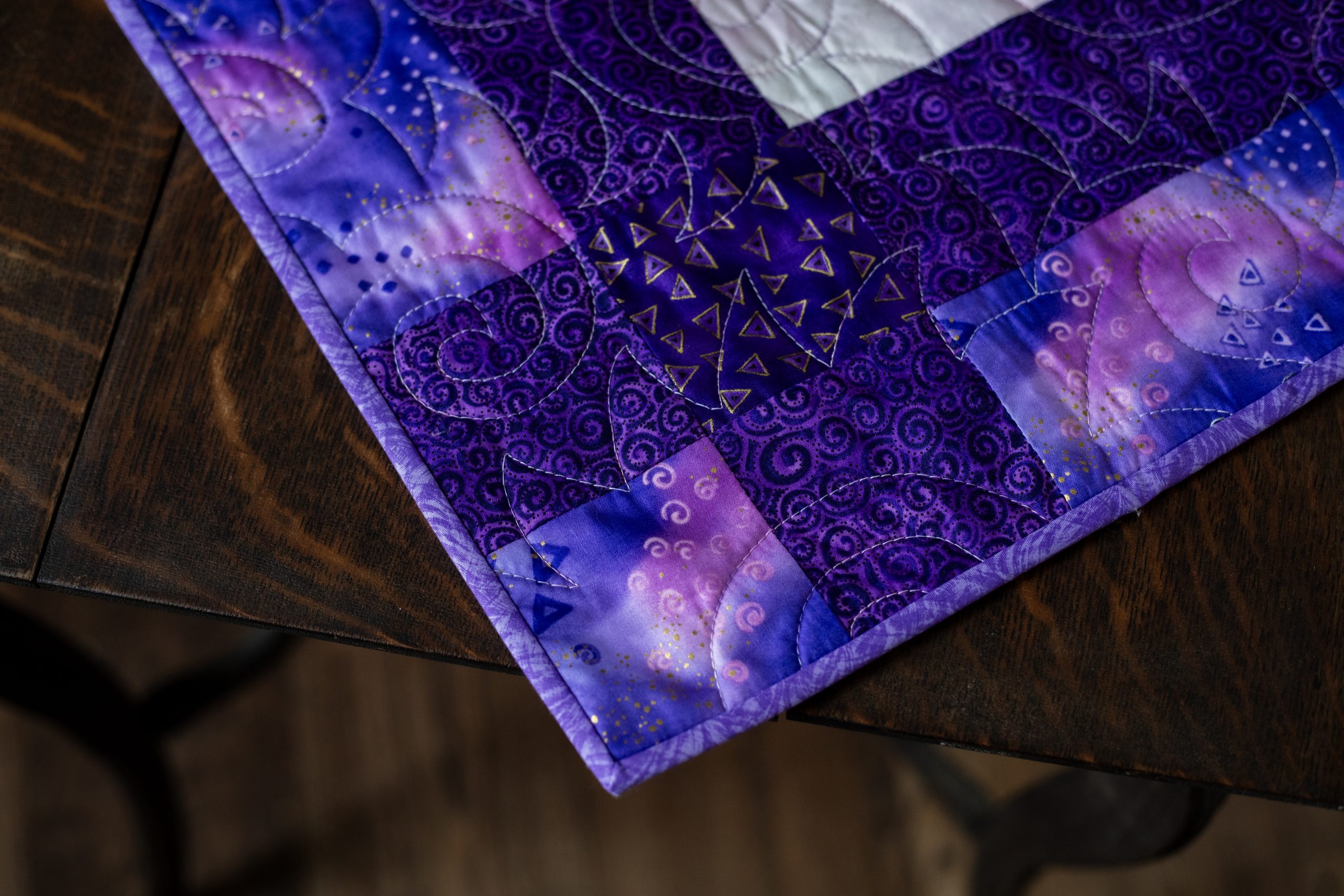
Very pretty, love the colors!